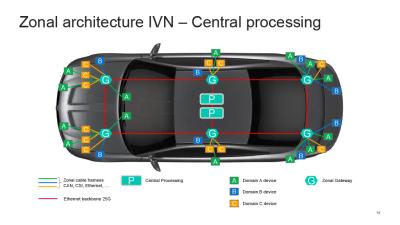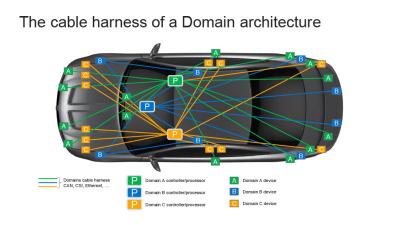In the rapidly evolving automotive technology landscape, high-speed communication is essential for the efficient operation of data-intensive systems within vehicles. Central to this connectivity is Ethernet, particularly Single Pair Ethernet (SPE) distinct from BASE-T or four pair Ethernet by BASE-T1. T1 technology serves as the foundation for modern automotive backbone for applications involving communication systems. T1 provides a standardized communication framework, while speed variants like MultiGBASE-T1 (2.5G, 5G and 10G) are propelling the industry forward with higher speeds or throughput of data.
As demand for faster data transfers grows, T1 technology has expanded into versions such as 100BASE-T1, 1000BASE-T1, and MultiGBASE-T1, catering to everything from basic vehicle functions, such as a backup camera, to advanced driver-assistance systems (ADAS). The introduction of 2.5Gbps, 5Gbps, and 10Gbps speeds under MultiGBASE-T1 is critical for next-generation vehicles, allowing for more complex zonal architectures while reducing cabling and enabling further end-to-end Ethernet.
As automotive systems become more sophisticated, MultiGBASE-T1 facilitates faster communication between components—vital for reliable data transmission among central compute modules, sensors, infotainment units, and ADAS. Its integration supports high-bandwidth systems that ensure optimal vehicle performance and safety.


Image Source: IEEE via Marvell
Moreover, the standardization of MultiGBASE-T1 (IEEE 802.3ch) enables auto-negotiation, energy efficiency, and improved electromagnetic compatibility, while using a single twisted pair of wires enhances flexibility and reduces costs. The increasing complexity of automotive systems has led manufacturers to adopt zonal architecture, which groups related functions into "zones" connected by high-speed links. This architectural approach aligns well with MultiGBASE-T1, simplifying integration and scalability.
As manufacturers innovate, the importance of high-speed connectivity continues to be necessary in order to meet future throughput of data in vehicle networks (IVN). While T1 lays the groundwork, MultiGBASE-T1 offers the necessary bandwidth and performance for future vehicles. With speeds up to 10Gbps, MultiGBASE-T1 is poised to drive the next generation of automotive Ethernet, and compliance with the latest IEEE 802.3 specifications will be crucial for ensuring optimal performance of the IVN and safety of the those inside the rolling datacenters we know as the future of automobiles.
Adopting Ethernet standards in automobiles will allow car manufacturers to reduce costs and increase bandwidth through cost-effective components and fewer cabling. We offer a wide range of extensively detailed test suites designed for your Automotive Ethernet Devices, including Automotive Development Platforms, Bridges, HeadNode, Sensors, and Infotainment Systems.
Check out this Webinar on Accelerating Automotive Communications with MultiGBASE-T1 Standards!
